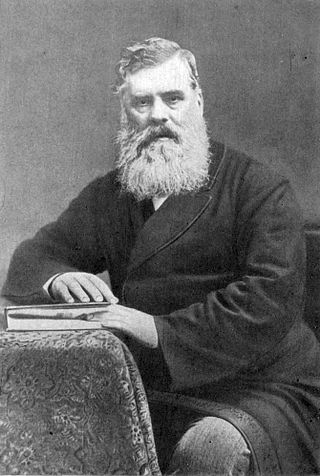
The International Bryozoology Association (IBA) is a professional association with international membership specialising in research of the phylum Bryozoa. [1]

The International Bryozoology Association (IBA) is a professional association with international membership specialising in research of the phylum Bryozoa. [1]
The International Bryozoology Association was founded in May 1965 in Stockholm, Sweden. The first conference was held in August 1968 in Milan, Italy. [2]
Since then the IBA's conferences have been held every three years in a different city:
There are approximately 250 registered members of the IBA from across the world.
| Year | Name of President |
|---|---|
| 1965–1968 | Alan Cheetham |
| 1968–1971 | Nils Spjeldnaes |
| 1971–1974 | Frank J. S. Maturo |
| 1974–1977 | John S. Ryland |
| 1977–1980 | J. D. Soule |
| 1980–1983 | Gilbert P. Larwood |
| 1983–1986 | |
| 1986–1989 | Roger J. Cuffey |
| 1989–1992 | |
| 1995–1998 | Peter Hayward |
| 1998–2001 | Frank Kenneth (Ken) McKinney |
| 2001–2004 | Dennis P. Gordon |
| 2004–2007 | Paul D. Taylor |
| 2007–2010 | Judith Winston |
| 2010–2013 | Eckart Håkansson |
| 2013–2016 | Patrick Wyse Jackson |
| 2016–2019 | Timothy Wood |
| 2019–2022 | Antonietta Rosso |
| 2022–2025 | Caroline Buttler |

Bryozoa are a phylum of simple, aquatic invertebrate animals, nearly all living in sedentary colonies. Typically about 0.5 millimetres long, they have a special feeding structure called a lophophore, a "crown" of tentacles used for filter feeding. Most marine bryozoans live in tropical waters, but a few are found in oceanic trenches and polar waters. The bryozoans are classified as the marine bryozoans (Stenolaemata), freshwater bryozoans (Phylactolaemata), and mostly-marine bryozoans (Gymnolaemata), a few members of which prefer brackish water. 5,869 living species are known. At least two genera are solitary ; the rest are colonial.

Thomas Oldham was an Anglo-Irish geologist.
Grenville Arthur James Cole FRS, FGS, MRIA was an English geologist. He was from 1890 the Professor of Geology and Mineralogy in the Royal College of Science for Ireland, and from 1905 he became the fifth Director of the Geological Survey of Ireland.

Hederellids are extinct colonial animals with calcitic tubular branching exoskeletons. They range from the Silurian to the Permian and were most common in the Devonian period. They are more properly known as "hederelloids" because they were originally defined as a suborder by Bassler, who described about 130 species. Although they have traditionally been considered bryozoans, they are clearly not because of their branching patterns, lack of an astogenetic gradient, skeletal microstructure, and wide range in tube diameters. Work continues on assessing the true affinities of hederelloids, but they appear to be most closely related to phoronids and other lophophorates.
Colette Caillat was a French professor of Sanskrit and comparative grammar. She was also one of the world's leading Jain scholars.

Jeremy Bradford Cook Jackson is an American ecologist, paleobiologist, and conservationist. He is an emeritus professor at the Scripps Institution of Oceanography, senior scientist emeritus at the Smithsonian Institution, and visiting scientist at the American Museum of Natural History Center for Biodiversity and Conservation. He studies threats and solutions to human impacts on the environment and the ecology and evolution of tropical seas. Jackson has more than 170 scientific publications and 11 books, with nearly 40,000 citations listed on Google Scholar.
David Alexander Brown was a geologist who played an important role in developing the study of Geology in Australia. He was born on 8 February 1916 in Scotland. His father fought and died at Gallipoli in World War I. His mother took him to New Zealand when he was four years old.
Helen Margaret Duncan was a geologist and paleontologist with the United States Geological Survey from 1945 to 1971, where she worked in the Paleontology and Stratigraphy Branch. Duncan was considered one of the strongest women in the Cincinnati geology department; her contributions to the Lipalian Research Foundation and the Pick and Hammer shows were additional work of her time. Duncan paved the path for many geology scholars to follow with her discoveries on fossil records and her studies in paleontology and stratigraphy.

The Casa del Arte José Clemente Orozco is a Chilean art museum on the campus of the University of Concepción, in Concepción. It is situated on the corner of Chacabuco and Larenas, facing the Plaza Perú. The gallery attracts approximately 75,000 visitors a year and houses the country's largest collection of paintings outside the capital city of Santiago, and the most complete collection of Chilean art with some 1,800 works. One of its main features is the mural Presencia de América Latina (1964) by the Mexican artist Jorge González Camarena, which is in the entrance hall.
The International Association for Bear Research and Management (IBA), sometimes shortened to International Bear Association, is a professional organization for biologists, wildlife managers and others which focuses on wildlife conservation of the eight species of bear. The organization has over 550 members in 50 countries. Its focuses are scientific management of bears; research, distribution of information, and international conferences on bear biology, ecology and management.

Ernst Gustav Gotthelf Marcus was a German zoologist, former occupant of the chair of zoology at the University of São Paulo from 1936 to 1963, and co-founder of the Oceanographic Institute of the University of São Paulo.

Paleontology or palaeontology is the study of prehistoric life forms on Earth through the examination of plant and animal fossils. This includes the study of body fossils, tracks (ichnites), burrows, cast-off parts, fossilised feces (coprolites), palynomorphs and chemical residues. Because humans have encountered fossils for millennia, paleontology has a long history both before and after becoming formalized as a science. This article records significant discoveries and events related to paleontology that occurred or were published in the year 2014.
Veronica Conroy Burns was an Irish museum curator, best known as an expert on graptolites.
James Edwin Duerden or J.E. Duerden M.Sc., Ph.D., A.R.C.S. was a British zoologist who became an international expert on the wool industry.
Madeleine Alberta Fritz was a Canadian palaeontologist. She was a professor at the University of Toronto, where she taught vertebrate studies in the department of Geology. Fritz's writing on the fossil Bryozoa along with her research on the stratigraphy of Toronto and the surrounding areas were major contributions to the geological field.
Paleontology or palaeontology is the study of prehistoric life forms on Earth through the examination of plant and animal fossils. This includes the study of body fossils, tracks (ichnites), burrows, cast-off parts, fossilised feces (coprolites), palynomorphs and chemical residues. Because humans have encountered fossils for millennia, paleontology has a long history both before and after becoming formalized as a science. This article records significant discoveries and events related to paleontology that occurred or were published in the year 2015.

Karl Franzevich Rouillier or Rul'e was a French-origin zoologist, geologist, paleontologist and professor who introduced ideas and approaches to understanding evolution in Russia, questioning the paradigm of the time of species being fixed and unchanging from the time of Biblical Creation.
Paleontology or palaeontology is the study of prehistoric life forms on Earth through the examination of plant and animal fossils. This includes the study of body fossils, tracks (ichnites), burrows, cast-off parts, fossilised feces (coprolites), palynomorphs and chemical residues. Because humans have encountered fossils for millennia, paleontology has a long history both before and after becoming formalized as a science. This article records significant discoveries and events related to paleontology that occurred or were published in the year 2022.
Monticulipora is an extinct genus of Ordovician bryozoans belonging to the family Monticuliporidae. It was first named in 1849, and its description was published the following year by French paleontologist Alcide M. d'Orbigny, making it one of the earliest bryozoans to be recognized in science. It is still one of the most widespread fossil bryozoan genera. Though colonies that grow in masses made of multiple layers are characteristic of the genus, its colonies have varying shapes, able to be encrusting, branching, massive, or frond-like, and are covered in monticules (bumps). Most Monticulipora species have distinctively granular walls, and Monticulipora and can be distinguished from Homotrypa by the presence of axial diaphragms.
Eliza Catherine Jelly was an English bryozoologist. She was one of the first women to work and publish in the field of bryozoology. Her 1889 text The Synonymic Catalogue of the Recent Marine Bryozoa is still used as a reference material.